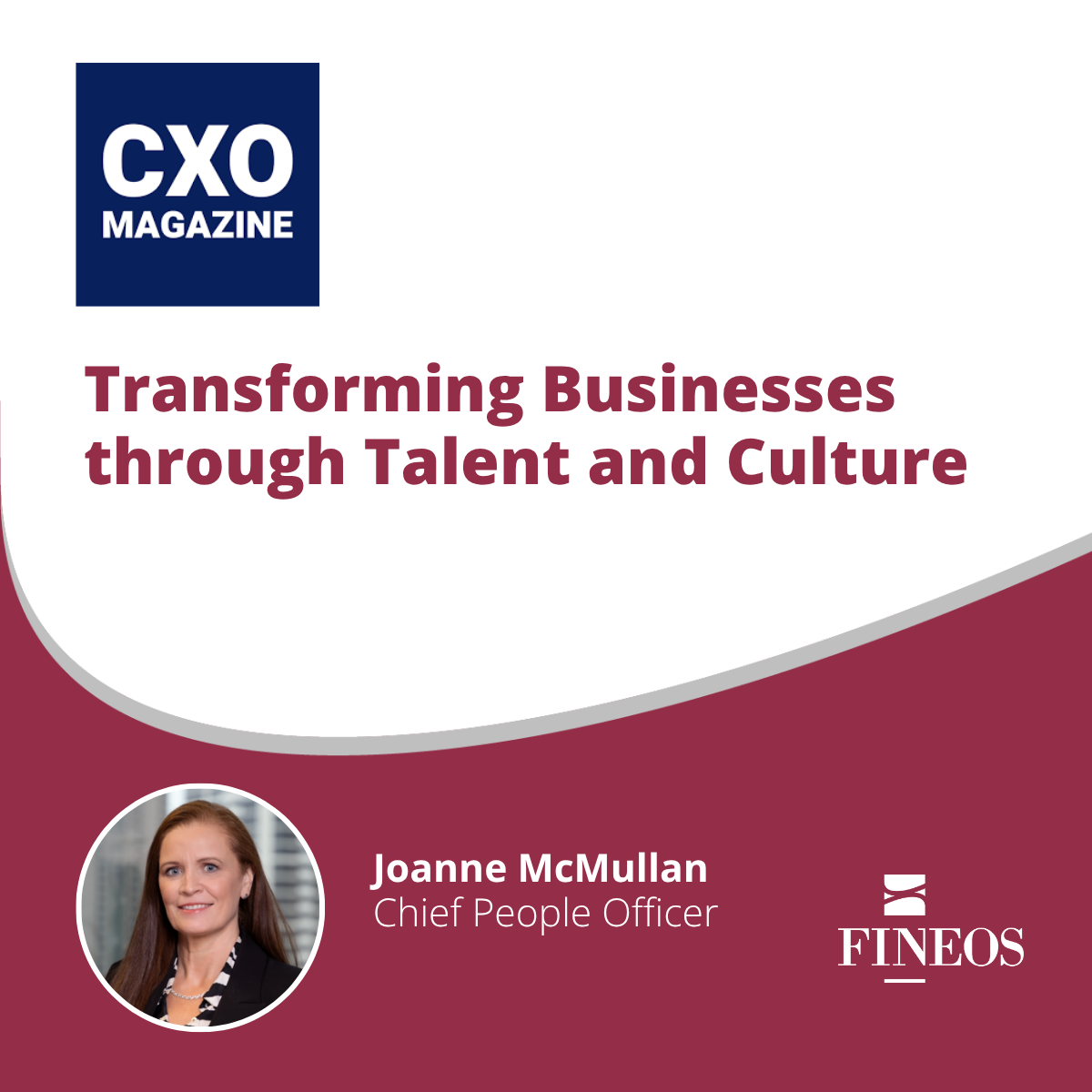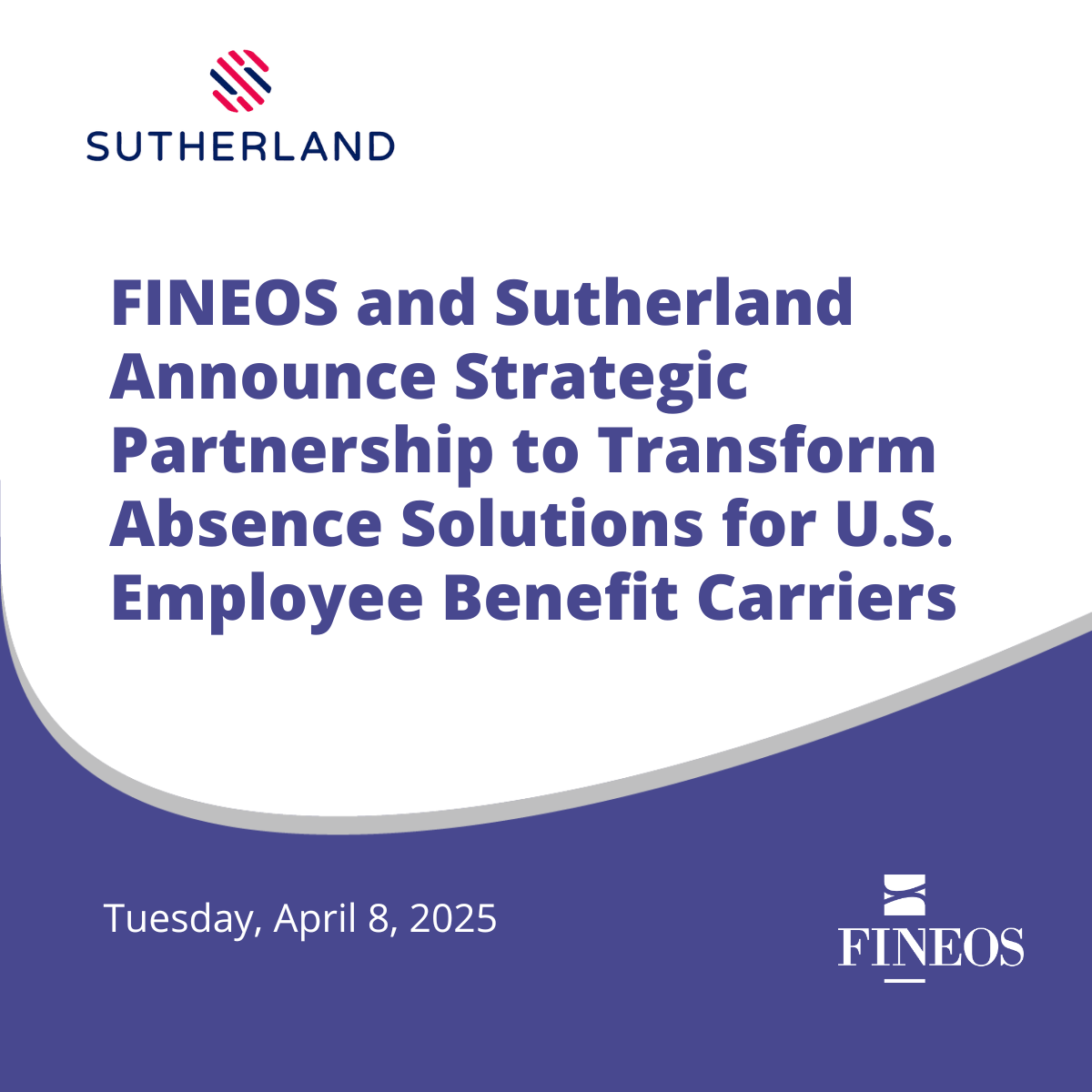Original article appeared in Benefits Pro, July 2022
By: Megan Holstein, EVP Claims & Absence, FINEOS
To attract and retain employees, employers and insurance carriers must continually evaluate benefits offerings, trends, and tools.
The COVID-19 pandemic dramatically changed the world of work, including expectations around employee benefits. In 2021, more than 47 million Americans quit their jobs. Many are reconsidering their work, in terms of work-life balance and where to work, i.e. in person, hybrid, or remote. As a result, employers must examine their employee benefits package. Employers and insurance carriers have an opportunity to modernize employee benefits to combat the Great Resignation, the Great Realignment, or Turnover Tsunami as the phenomenon is described.
Employee Benefits as a Concept Gain Greater Importance
Despite record numbers of people leaving the workforce in recent years, the benefit packages provided with regular employment have never been more important. The Society of Human Resource Management’s 2022 Employee Benefits Survey indicates that when viewed individually, employers indicate each benefit is even more important than it was prior to the pandemic, resulting in a different mindset toward benefits such as flexible work, family care, and paid leave.
Continued rapid change in the way we work and the workforce will require employers and insurance carriers to remain vigilant. Look for states and the private market to pave the way to support needed changes such as more innovative voluntary employee benefits, long-term care programs and products, and paid family leave. A notable challenge will be addressing the “adverse selection” nature of some voluntary benefits. A key insurance concept is the spreading of risk across larger groups to provide predictability of future utilization. To address this, innovation is happening quickly around benefit portability to cover employee turnover, those workers that are contractors and part of the gig economy, or employees who have multiple employers.
Focus on Financial Wellness
Employers have renewed focus on mental health and wellness, largely to combat burnout to avoid the Turnover Tsunami. These benefit offerings have been desperately needed and well-received by the workforce. Savvy employers go one step further and focus on financial wellness, too, understanding that financial wellness reduces undue stress. In today’s job market, financial wellness benefits go beyond retirement benefits such as a 401(k) plan to include emergency savings, student loan repayment, and paid leave.
Prior to and throughout the pandemic, workers have remained fearful of using their time off, for fear of termination or inability to pay bills, hence the resulting patchwork of federal, local, and state leave laws. People can’t afford to lose their jobs if they take time off, and workers haven’t saved for an unplanned absence like we’ve experienced with the pandemic.
Employers quickly learned that paid leave is essential during critical life events and financial security creates peace of mind at work. They have increased offerings around income protection like short-term disability and paid leave. Additionally, government paid family and medical leave (PFML) programs are passing at an increased rate – Connecticut Paid Family and Medical leave program began this year; Colorado’s and Oregon’s programs are next; and three other states already passed paid family and medical leave laws this year. Many employers are using these state-mandated PFML programs as a starting point to offer enhanced paid leave benefits through a voluntary or private paid family and medical leave offering. Employers can take these statutory programs to the next level and purchase insured family or medical leave (IFML) products to support employees in many other states as well.
Tailored Benefits to Fit Today’s Workforce
Companies have innovated to quickly shift benefits and their delivery to the changed needs and demands of today’s workforce. Employers are recognizing holidays like Juneteenth as paid company holidays and introducing new company “perks” such as mental health days or the four-day work week. Employees have seen the art of the possible and expect more from their employers when it comes to workplace benefits.
Employers are scrambling to hire and retain employees and fight burnout – the risk of depression among employees is 71% higher than it was before COVID-19vivi – using tailored benefits as a tool. Rather than a one-size-fits-all benefit package, employers are transitioning to personalized benefits offerings where employees can choose from a menu such as skills assessments, trainings, tuition assistance, fertility benefits, and virtual mental health management.
By transitioning to a tailored or menu approach with employee benefits, these employers are also addressing diversity, equity, and inclusion (DEI) initiatives. This approach to benefits recognizes that employees’ lives differ and so too will the needs and use of employee benefits. For example, not all employees need family-related benefits, so for DEI purposes, employers are seeking benefits for employees of all walks of life and stages of their lives, including pay-for-vacation, pet insurance, and career advancement training — not just parental leave, fertility benefits, or life insurance benefits supporting a traditional spousal relationship.
How To Remain Competitive
As the employee benefits market undergoes this transformation, insurance carriers and employers must have a change management plan to consider what the next generation of benefits will entail and the resources to support them.
- Acknowledge: There is likely no new normal, or any normal, and constant change is here for the foreseeable future. Those armed with tools and partners that provide benefit usage data and trends, compliance updates, and innovative, flexible offerings will fare better.
- Assess: Designate a person or group to assess the benefits possibilities from things like paid leave, mental health services, emergency savings, and pet insurance. Survey employees and the local market to understand needs and trends. Assess technology to deliver the benefits. Solutions may include productivity indicators for remote and hybrid work, leave of absence portal or software, and benefit enrolment education tools.
- Analyze: Have employee benefits usage data at your fingertips. This information can help inform potential policy and program changes. Not all benefits changes have to be major: consider swapping that margarita machine for a program supporting floating holidays or volunteering in the community. It is also important to analyze the why behind offering certain employee benefits. For example, what does the organization get out of offering the benefits and do they align with the organization’s mission and values? Finally, such analysis will assist in planning and budgeting for new and changing benefits and resources. HRIS and HCM systems as well as most insurance carriers provide data analytic insight around employer policies, benefits usage, and leave of absence trends.
In summary, the Great Realignment is reforming the workplace in more ways than one. As the demand for talent and reducing burnout remain challenges, employers and insurance carriers must continually evaluate benefits offerings, trends, and tools in order to evolve, stay competitive and attract and retain top talent.
About the Author
Megan Holstein, Esq., is the executive vice president of Claims and Absence Product at global software company FINEOS, responsible for the strategic design and marketing of the company’s Claims, Absence and Integrated Disability and Absence Management (IDAM) software solution. She is an adjunct professor at the University of Denver Sturm College of Law where she teaches Human Resources Management, and a past adjunct professor at the University of Colorado School of Law where she taught Employee Benefits Law. She is a member of the Disability Management Employer Coalition’s (DMEC) Executive Advisory Board.


